Higher classification Leporids Phylum Chordata | Infraclass Eutheria Scientific name Sylvilagus Rank Genus Order Hares, pikas, and rabbits | |
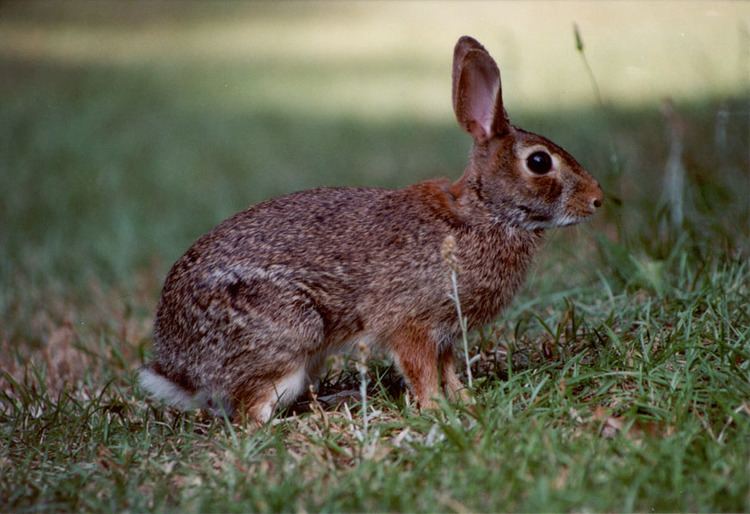 | ||
Similar | ||
Abandoned baby cottontail rabbit rescue
Cottontail rabbits are among the 17 lagomorph species in the genus Sylvilagus, found in the Americas.
Contents
In appearance, most cottontail rabbits closely resemble the wild European rabbit (Oryctolagus cuniculus). Most Sylvilagus species have stub tails with white undersides that show when they retreat, giving them their name: "cottontails". This feature is not present in some cottontails (for example, the underside of the brush rabbit's tail is gray), nor is it unique to the genus (for example, the European rabbit also has a white scut).
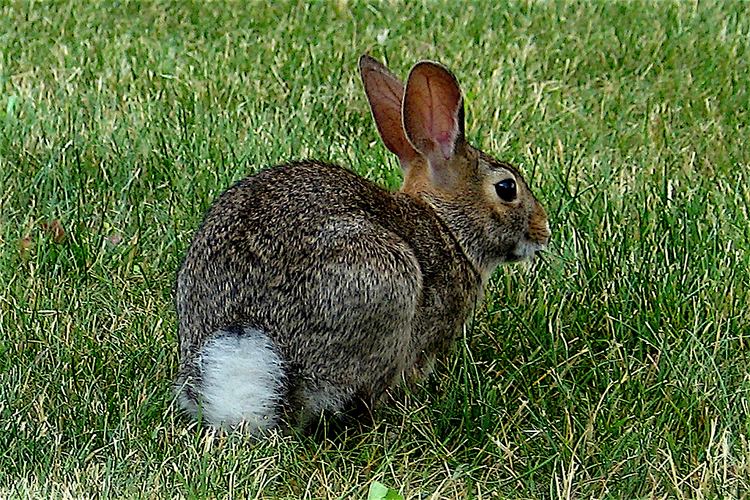
The genus is widely distributed across North America, Central America, and northern and central South America, though most species are confined to particular regions. Most (though not all) species live in nests called forms, and all have altricial young.
Cottontail rabbits show a greater resistance to myxomatosis than European rabbits.
Cottontail Rabbit
Lifespan
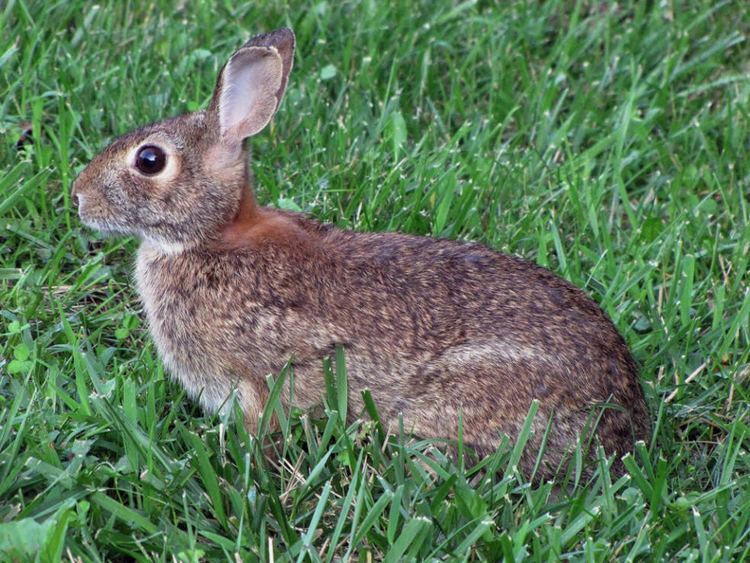
The lifespan of a cottontail averages about two years, depending on the location. Almost every living carnivorous creature larger or faster than the lagomorph is its predator. That includes: domestic dogs, humans, snakes, coyotes, mountain lions, foxes, and if the cottontail is showing signs of illness, even squirrels.

The cottontails biggest threat comes from above. Large birds of prey swoop down on cottontails, and sometimes carry them upwards, and then drop them to end their life, or stun them with an aerial assault, and poke them to death. Those cottontails particularly vulnerable to attack, are the newborn. Cottontail lagomorphs borrow burrows that have been vacated by other animals. Some predators, like snakes for example, are well aware of the local real estate used and reused by the cottontails, and make a meal of the young at will, with little or no resistance by the mother rabbit. She is defenseless against any and all that would get close enough to eat her or her young. Though cottontails are very sexually active creatures, and mated pairs have several offspring many times in all seasons, it is more likely than not that none will survive to adulthood. Those that do manage to avoid being eaten, grow very quickly and are considered full grown adults at three months.
Eating mechanics
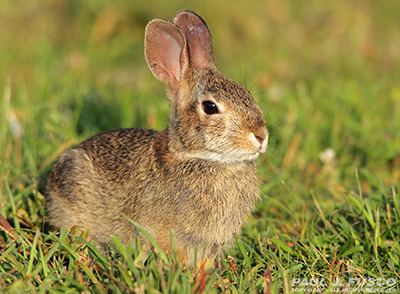
Unlike the squirrel and chipmunk that eat sitting up on their hind legs and can hold food with their front paws while spinning it in circles to devour it quickly, the desert cottontail, like all cottontails, eats on all fours. It can only use its nose to move and adjust the position of the food that it places directly in front of its front paws on the ground. The cottontail rabbit will turn the food with its nose to find the cleanest part of the vegetation (free of sand and inedible parts) to begin its meal. The only time a cottontail uses its front paws to enable eating is when vegetation is above its head on a living plant. The cottontail will lift its paw to bend the branch to bring the food within reach.
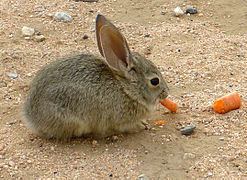
Cottontails are rarely found out of their burrows looking for food on windy days, because the wind interferes with their hearing capabilities. Hearing an oncoming predator is their primary defense mechanism.
Species
Genus Sylvilagus
